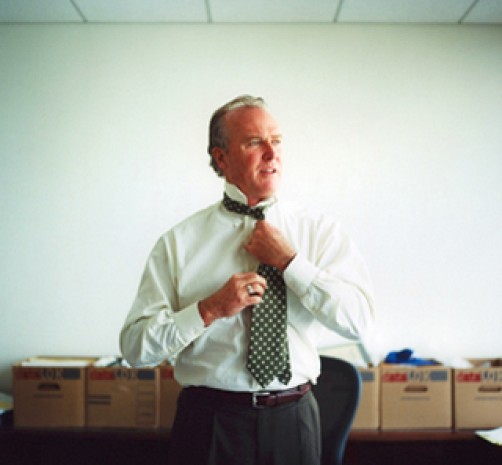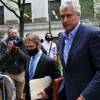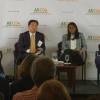Ecuador Internacional
Environmental Practice Group Of The Year: Gibson Dunn
Law 360 12/01/2015

Fuente: Law 360
Law360, New York (January 09, 2015, 7:20 PM ET) -- Gibson Dunn’s environmental practice group spent 2014 racking up huge wins for clients, from obtaining a finding that a $9.5 billion damages award against Chevron Corp. for alleged contamination of an Amazon oil field was gained through fraudulent means to securing the dismissal of key plaintiffs’ claims in toxic tort litigation against International Paper Co., earning the firm a place among Law360’s Environmental Practice Groups of the Year.
Peter E. Seley, a partner in the firm’s Washington, D.C., office and co-chair of the environmental litigation and mass torts practice group, said there are 45 attorneys in the group, 19 of whom are partners, spread throughout domestic offices, particularly in Washington, D.C., and California.
He said the group has become established at the firm over a 30-year period, with a lot of growth having come in the last decade as clients reacted to a wave of toxic tort litigation.
In March, U.S. District Judge Lewis A. Kaplan declared the $9.5 billion Amazon pollution judgment against Chevron to be the product of an “egregious fraud” by attorney Steven Donziger and his Ecuadorean clients and prohibited enforcement of the award in the United States. Judge Kaplan divested Donziger and the so-called Lago Agrio plaintiffs of any interest in the underlying Ecuadorean litigation and blocked enforcement proceedings in this country.
Seley, who was on the trial team, said the litigation is a case study in how a dogged, patient, long-term strategy can unwind plaintiffs’ claims.
“There were times in the mid-2000s where there was a lot of negative press, a lot of kudos going to Donziger and his co-conspirators, and it really took a long time for Chevron to uncover all of the facts and show people that what was being said wasn’t accurate,” Seley said.
He said many other companies have realized, through the Chevron litigation, that they can’t just be concerned about negative press or negative attention, but also must make sure that what’s being alleged has solid foundations.
For Chevron, the effect of the hard legal work is that courts across the globe may be less likely to enforce the Ecuadorean court’s award in light of the thorough decision authored by Judge Kaplan.
“It taints the judgment that was issued by the Ecuadorian court. Not only on its substance, but also in the way that the judgment was obtained by the plaintiffs,” Seley said.
And he said the case also nicely highlights the advantages offered by Gibson Dunn’s ability to bring different types of expertise to bear, depending on what’s needed for the client. He said all the lawyers worked, over four years, pulling on threads in the plaintiffs’ claims to reveal something they could use in court.
“It was one discovery matter laid on top of another discovery matter, laid on top of yet another, all in different locations, that began to really reveal the extent of the fraud,” Seley said.
In other litigation involving allegations that International Paper Co.’s operations at a former mill in Bastrop, Louisiana, caused personal injuries and property damage, the firm successfully defeated key claims made by the nearly 400 plaintiffs.
First, in March, the federal district court judge granted summary judgment on all plaintiffs’ property damage claims and counts of trespass and public nuisance. Just over a week later, the court granted summary judgment on all claims — with prejudice — asserted by four bellwether plaintiffs due to insufficient evidence of exposure to the alleged emissions.
Then, in a series of rulings between April to November, the court granted the company’s motions to exclude all seven experts proffered by plaintiffs, including all of plaintiffs’ fate and transport and medical causation experts.
“Like the Chevron case, toxic tort cases are cases that companies generally take notice of. They are high-risk cases, potentially high-value cases, and they also can garner a lot of negative media attention and negative regulatory attention,” Seley said.
He said the Gibson Dunn team was once again able to succeed by drawing on its experience and expertise in handling the complex and technical matters that arose in the matter. Toxic tort cases are challenging because they often involve a host of scientific issues that are not the language of everyday litigators, Seley said, so a defendant really needs a firm and group that has specialty in these areas.
In these cases, Gibson Dunn adopted a strategy of focusing early on issues that are often the biggest challenges in plaintiffs’ cases: fate and transport, causation, and some of the environmental science.
“The International Paper cases are a great example of why you want to employ that strategy, because ultimately, it narrows the focus of the case, it ensures that non-meritorious claims are eliminated and it makes these cases much more manageable from a defense perspective,” he said.
Another big win for group in 2014 included securing an order requiring the Sierra Club to pay $6.4 million in attorneys’ fees for filing a “frivolous” citizen suit against Energy Future Holdings Corp. subsidiary Luminant Generation Co. LLC.
The firm also helped International Paper escape a $3 billion environmental enforcement suit after a Harris County, Texas, jury found the company not responsible for the release of dioxins into the San Jacinto River over the span of 35 years.
And it helped its client Lockheed Martin Corp. secure a declaratory judgment under the Comprehensive Environmental Response, Compensation and Liability Act against the federal government in a dispute over a multi-million dollar cleanup of a large Cold War-era rocket motor manufacturing facility near Redlands, California.
Notas relacionadas
-
 Analysis: Liberal Media Lionize Anti-Chevron Lawyer Steve Donziger
Analysis: Liberal Media Lionize Anti-Chevron Lawyer Steve Donziger -
 Análisis: Medios de comunicación izquierdistas convierten en mártir al corrupto abogado anti-Chevron, Steven Donziger
Análisis: Medios de comunicación izquierdistas convierten en mártir al corrupto abogado anti-Chevron, Steven Donziger -
 Inicia juicio contra abogado que demandó a Chevron por contaminación en Ecuador
Inicia juicio contra abogado que demandó a Chevron por contaminación en Ecuador -
 Árbitro ignora conclusiones judiciales y recomienda que Steven Donziger sea readmitido al Colegio de Abogados
Árbitro ignora conclusiones judiciales y recomienda que Steven Donziger sea readmitido al Colegio de Abogados -
 Disbarment 'Too Extreme' for Donziger, Referee Finds
Disbarment 'Too Extreme' for Donziger, Referee Finds -
 Caso Sobornos 2012-2016 es destacado en foro sobre lavado en Nueva York
Caso Sobornos 2012-2016 es destacado en foro sobre lavado en Nueva York
